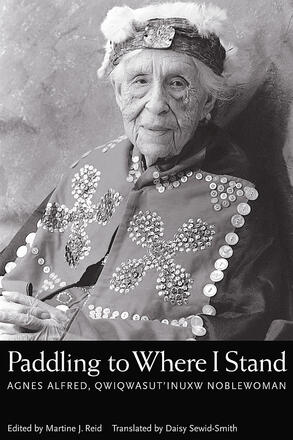
Paddling to Where I Stand
Agnes Alfred, Qwiqwasutinuxw Noblewoman
A first-hand account of the greatest period of change experienced by the Kwakwaka'wakw people since their first contact with Europeans.
Description
The first-ever biography written about a woman of the Northwest Coast’s Kwakwakawakw people, Paddling to Where I Stand presents the memoirs of Agnes Alfred (c. 1890-1992), a non-literate noble Qwiqwasutinuxw woman of the Kwakwakawakw Nation and one of the last great storytellers among her peers in the classic oral tradition. Agnes Alfred documents through myths, historical accounts, and personal reminiscences the foundations and the enduring pulse of her living culture. But this is more than another anthropological interpretation; it is the first-hand account of the greatest period of change the Kwakwaka’wakw people experienced since first contact with Europeans, and Alfred’s memoirs flow from her urgent desire to pass on her knowledge to younger generations.
Awards
- Commended, BC Historical Federation Book Prize, BC Historical Federation 2005
Reviews
Reid carefully conveys gestures, moods, and inflections evident in storytelling, enhancing authenticity. Paddling to Where I Stand deserves a spot in every Canadian library’s shelf.
- Carolyn Redl, Integrated Studies Program, Athabasca University
The pleasure of reading Paddling to Where I Stand . .. will be found, first, in Reid’s interrogation of autobiography and her strategies for ensuring that this story is Agnes Alfred’s story, and second, in the successful outcome of these strategies. Agnes Alfred emerges, in her own words, the “extraordinary woman with an extraordinary life” that her granddaughter describes in her funeral elegy.
- Mary Clearman Blew